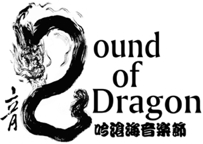
Left: Yang Xue (middle) and Bows & Strings Erhu Ensemble (Beijing). Right: Vancouver Erhu Quartet
click on the photos to open the link for high resolution download
Sound of Dragon Music Festival – Concert 2: Dance of the Bows & Strings (Beijing vs Vancouver)
Yang Xue’s Bows & Strings’ Dance (Beijing, China) & Vancouver Erhu Quartet
楊雪、弓弦舞胡琴重奏組(北京中央音樂學院師生) & 溫哥華二胡四重奏
8pm Saturday May 25, 2024年5月25日星期六晚上8點
The Annex, 823 Seymour Street, Vancouver
Bows’ and Strings’ Dance 2024 members:
Dai Meng Yao, Liu Yi Ran, Fan Han Qing, and Feng Xiao
弓弦舞胡琴重奏2024年溫哥華首演成員:
代梦瑶, 刘一冉, 范翰卿, 冯潇
music director Yang Xue (free lecture/demo at 12pm May 25 at the Annex)
楊雪(中央音樂學院二胡教授)擔任音樂總監, 5月25日中午12點免費二胡講座
thanks to Mr. Xia 夏祥彬先生 for lending us some of the instruments
Yang Xue, internationally renowned erhu soloist, has given numerous solo concerts and premiered groundbreaking solo, chamber, and concerto works in China and abroad in Europe, America, Asia, and Africa, collaborating with orchestras such as the Royal Philharmonic Orchestra of London and the Royal Scottish National Orchestra. Yang formed the “Bows and Strings’ Dance” Huqin Ensemble and has gained the reputation as one of the pioneers in the field of erhu ensemble performance.
The Bows and Strings ‘Dance Erhu (Huqin) Ensemble was established in 2009, initiated by music director Professor Yang Xue. The ensemble primarily consists of Yang’s students at the Central Conservatory of Music (Beijing), with the aim of cultivating and enhancing the performers’ polyphonic aural skills and polyphonic thinking in performance, embodying Professor Yang’s unique teaching philosophy that combines solo and ensemble playing.
The ensemble has always been dedicated to grounding itself in the traditions of huqin music, while drawing upon western compositional theories to enrich vocabulary and expand the language of Chinese bowed instruments. The ensemble has been featured in a series of Yang Xue’s textbooks teaching erhu ensemble playing techniques. It has released CDs and been featured in academic papers. The ensemble has toured in China and aboard, performing in Singapore, Malaysia, Beijing, Nanjing, Guangzhou, Tianjin, Lanzhou, Hong Kong, Macao, and Taiwan. They have successfully premiered commissioned works such as “Bows and Strings ‘Dance” and “Red Velvet,” delivering captivating performances at high profile events, such as the Beijing Huqin Festival and the China Bowed String Festival. The ensemble was awarded the Silver Prize in the Professional Youth A Category at the 2nd “Dunhuang Cup” Chinese National Chamber Music and Ensemble Competition in 2021.
弓弦舞二胡(胡琴)重奏组
弓弦舞二胡(胡琴)重奏組成立於2009年,由中央音樂學院二胡教授楊雪老師發起並擔任音樂總監,成員以楊雪老師所教在校學生爲主,意在培養和提高演奏者的多聲部聽覺能力和多聲思維演奏能力,形成了楊雪老師 “獨奏與重奏相結合”的獨特教學理念。該重奏組始終都朝着立足中國胡琴藝術的傳統,藉助西方成熟的音樂創作形式,尋求更加豐富的語彙來擴展胡琴的音樂語言這一發展方向前行。已出版系列重奏教材和光盤,發表相關論文。該重奏組已先後在新加坡、馬來西亞等國家以及北京、南京、廣州、天津、蘭州等國內多個城市和港澳臺地區舉辦了數場形式多樣 的重奏專場音樂會。成功首演了《弓弦舞》《紅絲絨》等重奏作品,在北京胡琴藝術節、中國弓弦藝術節等活動中都有精彩演奏。曾獲 2021 第二屆 “敦煌杯”中國民族室內樂、重奏比賽職業青年A組銀獎。
The erhu is played while held on the lap. Its two strings are tuned to a fifth, with the bow placed between them. The erhu has no fingerboard. The player places the fingers on the strings without pressing them against the wood neck, giving the flexibility to apply different degrees of pressure on the strings to alter the tone. The erhu is usually made of ebony, sandalwood or rosewood, with a snakeskin resonator. Known for its expressive sounds, the erhu is one of the most versatile instruments. The erhu has been employed widely by musicians and composers in different contexts around the world. Although the erhu is almost 1000 years of history in China, bowed-string ensembles only began to emerge in Chinese music in recent years. In Asia, they are usually made up of instruments from the erhu or huqin family – erhu, gaohu, and zhonghu, in various sizes ranging from quartet to larger ensembles.
Created during the pandemic year in 2020, the Vancouver Erhu Quartet explores the sonic possibilities combining the erhu (Chinese violin) with western strings. The quartet consists of Vancouver erhu players Lan Tung and Jun Rong, violinist/violist Parmela Attariwala, and cellist Sungyong Lim. The quartet’s all-Asian members represent Taiwanese, Chinese, Punjabi, and Korean communities. Their interpretation of contemporary works is fused with the sensitivity and sense of breath from Asian traditions. At the same time, the musicians have performed/studied various musical styles to explore innovative approaches. Together they bring expertise in various genres, from traditional, contemporary, classical, avant-garde, to world/cross-cultural music. The Vancouver Erhu Quartet takes advantage of Canada’s multicultural environment to explore the combination of eastern and western bowed strings, as well as diverse influences from collaborating composers.
2020年成立的溫哥華二胡四重奏,以二胡與提琴的組合,融合東西方弓弦樂器特長,創造獨特的音響。團員包括來自台灣的董籃及來自北京的戎峻共同擔任二胡演奏,印度裔的帕米拉.阿特瓦拉 (Parmela Attariwala) 擔任中提琴手,以及來自韓國的林成容 (Sungyong Lim) 擔任大提琴手。他們各自專研的領域,涵蓋傳統音樂、古典音樂、現代音樂、即興演奏、世界音樂、到跨界表演藝術,在一起合作各展所長、互助互補,並為樂團帶來多元的活力。
做為極具表現力的樂器,二胡在世界各地被廣泛地使用於不同風格的音樂。這個擁有千年歷史的古老樂器,在近代不管是製作工藝、演奏技巧、曲目擴充方面,都有大量的提升,並且根據樂曲需要,以高胡、中胡、低音二胡等不同音域的胡琴彼此配合使用,以至於近年終於有了胡琴樂團在亞洲誕生。溫哥華二胡四重奏是加拿大第一個以二胡為主的弓弦樂室內樂團,以中西合璧的方式,透過胡琴與提琴的對話,探索新的音響。
